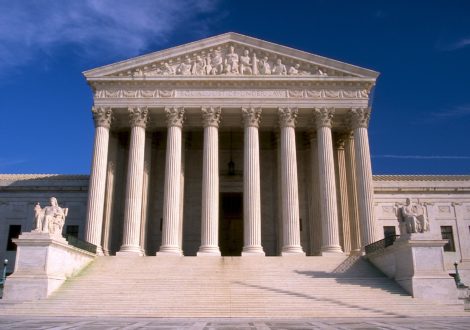
Holding government accountable to the law
The United States has a rich history of both wildlife and land protection. Many laws exist to protect the wildlife from special interests or industry that would wrongfully sacrifice preservation of our wildlife and wild lands for monetary gain. Laws also exist to ensure that government agencies are held accountable to the American people. When these laws aren’t followed or the rights of Americans are infringed upon, we step in to take legal action.
Cases:
Hunting on Inholdings in Grand Teton National Park
A case involving a wolf shot on a private inholding in Grand Teton National Park and who has jurisdiction over the wildlife on inholdings.
Effects of Bridger-Teton Alkali Feedground Permitting
A case against the continued deference to the state of Wyoming to operate the elk feedground known as Alkali Creek on the Bridger-Teton National Forest.
Forest Park, Dell Creek, and Alkali Creek Feedground NEPA Review
A case addressing the requirement of a National Environmental Policy Act review on three elk feedgrounds on the Bridger-Teton National Forest.
Environmental and Wildlife Protection Laws
Administrative Procedure Act
The goal of the APA is to make sure government agencies such as the Environmental Protection Agency are carrying out their missions in a fair and democratic manner. It requires a few things: that agency actions are made public knowledge, that formal standards for rulemaking and passing are established. The APA also requires that the public be able to participate in agency rule making, for instance through opening public comment and taking that comment into account in the final policy.
Endangered Species Act
The ESA is one of the most well-known pieces of conservation legislation in the U.S. The ESA establishes the categories of “endangered” — which means a plant or animal species is in danger of extinction throughout all or a significant portion of its range — and “threatened” — which means a plant or animal species is likely to become endangered within the foreseeable future. Once an animal is categorized as endangered or threatened, there is prohibition against the harassment, harm, pursuance, hunt, shooting, wounding, killing, trapping, capturing, or collecting of the species, and against any habitat degradation that might cause indirect harm to the animal’s ability to live and reproduce. Any species categorized as endangered or threatened also cannot be traded across states or internationally.
National Environmental Policy Act
The National Environmental Policy Act was the first big environmental law in U.S. history. It establishes a national policy “to use all practicable means and measures, including financial and technical assistance, in a manner calculated to foster and promote the general welfare, to create and maintain conditions under which man and nature can exist in productive harmony, and fulfill the social, economic, and other requirements of present and future generations of Americans.” It requires that federal agencies include in any plan for action a detailed statement that outlines the environmental impact of the proposed action, alternatives that might be less environmentally harmful, the environmental resources this project would permanently take up. NEPA makes sure that the environmental impact of proposed actions are recognized both by government agencies and the public when it comes time for decision making.
National Wildlife Refuge System Improvement Act
The National Wildlife Refuge System Improvement Act establishes the way that lands in the National Wildlife Refuge System are to be used and taken care of. The act asserts that the secretary of the interior must work to maintain the biological integrity, diversity, and environmental health of the Refuge System, that each refuge must have a comprehensive conservation plan, that conservation is the mission and priority of the system. The act also developed a process for approving uses such as hunting, fishing, photography, and environmental education on refuge lands — these uses can be primary purposes of the land if they are done in a way that respect the mission of conservation.
The Wilderness Act
The Wilderness Act, passed in 1964, established the National Park Service and created 54 wilderness areas across the U.S. The act established a procedure for creating new wilderness areas, “area[s] where the earth and its community of life are untrammeled by man.” It established the regulations for a wilderness area: roads and commercial enterprises are not allowed; motor vehicles, motorized equipment, boats and aircraft, and structures are all prohibited in the area, with only a few exceptions. These exceptions usually concern grandfathered structures and practices, such as livestock already grazed in the area, or exceptions that contribute to the safety of people in the area or “minimum requirements for administration.” Still, the president is permitted to override the wilderness designation to create water or power projects or other projects “in the public interest,” and states still have individual jurisdiction over fish and wildlife management in the areas.
National Forest Management Act
The NFMA creates standards and rules for how national forests are managed. Land management plans are required for national forests and grasslands, and the forest service must keep track of and publish the status and trends of renewable resources on these lands, as a method of keeping on track and preserving these resources. The NFMA establishes that while logging and resource harvest can take place on forest land, it must be done carefully and “only where soil, slope, or other watershed conditions will not be irreversibly damaged.” Like several other acts on this list, the forest service is also required to engage the public in the management of forest lands under this act. The act establishes requirements for maintaining and protecting wildlife on national forest lands.
